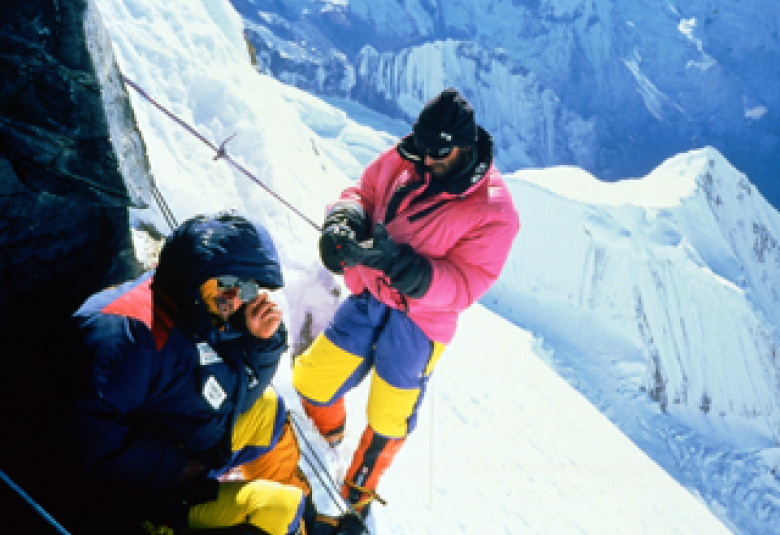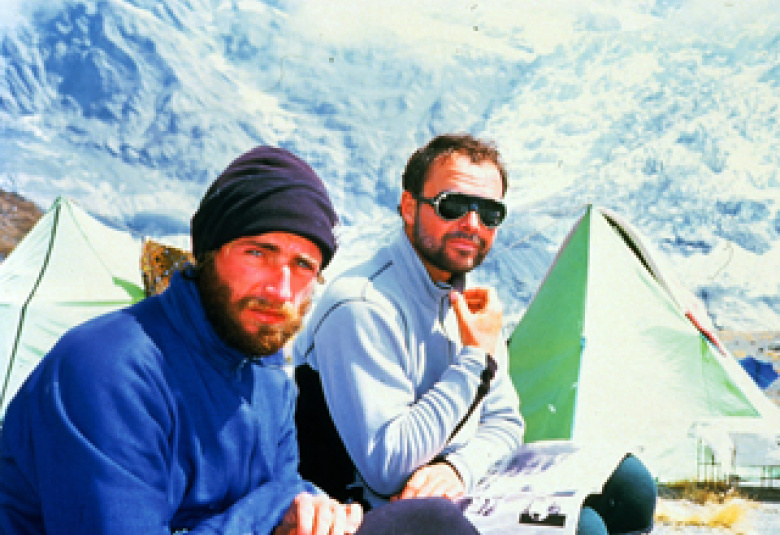TransferFix, we help you find your Chamonix transfer
TransferFix, we help you find your Chamonix transfer
Recently the K2 (8611m) made international news as the scene of the deadliest single accident in mountaineering history – bigger still that the 1993 accident on Everest that put the growing practice of commercial expeditions on the highest summit in the world into question. 11 people died, most in their descent from K2's summit, due to a large sérac fall. Some died due to the actual accident itself, but others died, stuck above 8000m without any means to access the fixed ropes on which they were dependant. 30 people were attempting the summit, which has a reputation being the most challenging summit in the world. Well before the tragedy, Yannick and his climbing partners renounced their summit attempt due to the unpredictable weather, which did not allow them a large enough window of good weather to complete the Southwest face with its many technical difficulties at high altitude (8300-8600m). Preferring not to climb the normal route dangerously menaced by sérac fall, they decided to call off their expedition and return to Chamonix, where both Yannick and Christian work as mountain guides. Today I spoke with Yannick about the future of alpinism and especially high altitude mountaineering as well as the tragedy on K2. He started by putting K2 in perspective, describing the complexity and the enormity of K2 by comparing it to 37 Matterhorns. He explained that there are 2 normal routes – the Spanish route (the South ridge) and the Abruzze Ridge (south east ridge) which come together under a bottleneck menaced by séracs. The weather had been extremely uncooperative this summer, causing many groups to consider whether or not they should stay and wait for a good window or just go home. There were many amateur groups who were attempting the mountain with the aid of fixed ropes and oxygen by the normal route, a trend that is growing more and more popular. Yannick, Christian, and Patrick considered staying but were afraid that if the window of good weather were shorter than they needed to do the Southwest face, they might be tempted to go up the normal route which was exposed to ice fall, would surely be overcrowded and was to be equipped with fixed ropes – a recipe for disaster. Mountains like Everest are usually prepared in advance for fixed roped climbers, but due to the objective dangers of the route and the lack of good weather, the route had only been equipped to about 8000m. The majority of climbers who relied on fixed ropes, therefore needed to go all together on the same summit push to relay each other in equipping the mountain further up. This led to many delays and the first summiteers only reached the summit in the evening despite a 1:00a.m. start time. Yannick thinks that climbing 8000m peaks should be an adventure and that this adventure is lost when climbers are dependant on fixed ropes and oxygen. In the days of Mallory and Irvine, climbers studied their peak and made their own decisions on the right route for the current conditions and when to go up. Today at base camps like K2 all the groups discuss the timing and the route together, leaving little decision making necessity for the individual amateur climber, which can lead to a dispersion of risk. Climbers need to consider the unpredictable and plan ways to manage their own risk. They also need to have a lot of experience when attempting these challenging peaks, and a thorough understanding of the inherent risks involved in their climbing style. Fixed roped climbers need to beware of the dangers of bottleneck areas and they need to be prepared for the possibility of climbing without a fixed rope. Yannick described what some people in the mountaineering community are calling the “8000er Club” – a group of climbers who place a lot of emphasis on summit results and don’t necessarily care in what manner they summit. These climbers rely on fixed ropes and seem to tackle the largest peaks without practicing the advanced climbing techniques that would be necessary to climb the mountain if they were climbing in alpine style. According to Yannick, it is as if they are approaching mountaineering backwards. They are jumping straight to the big mountains without taking the time to build up their skills on lesser mountains. This becomes dangerous when things go differently than predicted, which is, in effect, a defining characteristic of mountaineering. Yannick wonders what will happen in 20 or 30 years if this sort of mentality becomes the norm? Will the adventurous spirit of early mountaineering pioneers like Edward Whymper still have their place, or are they a disappearing breed? Yesterday there were approximately 400 people who summitted Mont Blanc here in Chamonix and 0 people on the more difficult but lower Aiguille Verte. Mountains have become big business. And mountains like K2, which were previously reserved for a mountaineering elite with lots of experience, are now opening themselves up to the summit-bagging amateur climber. Whereas the Everest accident of 1993 put turnaround times of commercial expeditions into question, Yannick wonders if this month’s K2 accident doesn’t put amateur groups climbing in fixed rope style without full awareness of the mountain's dangers into question. Asked whether or not he likes Himalayan or Alpine climbing, Yannick said that while both are good and one provides the necessary training for the other, he prefers the Himalayas because there is more terrain and possibility for aesthetic new first ascents. For him, it isn’t very interesting to go up an established itinerary, but to choose his own way up a mountain – and there is just more choice in the vast Himalayas. Tonight, at the Majestic at 9:00p.m., Chamonix and the Himlayan Committee hold their annual “Bilan de l’année montagne” honoring the best French ascents of the year with a special dedication to the mountaineering book editor, Michel Guerlain, and first Everest summiteer Sir Edmund Hillary who passed away this year. In addition to this year’s expeditions in Patagonia, Alaska, Pakistan, and the Jannu in Nepal, Yannick Graziani and Christian Trommsdorff will also present their 10 years of climbing partnership with films and presentations from their first summit together on the Kusum Kung Guru in 1998 through their experiences on Chomo Lonzo and Pumari Chish, the summits which earned them Golden Ice Axe nominations. For those interested in learning more about alpine style climbing, Yannick would like to recommend “Himalaya Alpine-Style: The Most Challenging Routes on the Highest Peaks” by Stephen Venerables.

